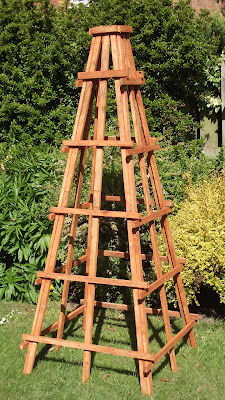Most children first experience of growing plants from seed starts by growing that old favourite cress, which can be enjoyed on a salad or a garnish in a sandwich.
Cress is so simple to grow and can be grown in doors all year round.
The two most popular methods to grow cress are either in a jar or in a shallow tray.
Growing in a jar:
Place the seeds in a clean jar and soak, a jam jar is ideal. Cover the opening of the jar with a porous material and secure with a rubber band, I find that a piece of cloth or old tights does the job.
Drain off any excess water and if the seeds need forcing place in a dark warm cupboard such as an airing cupboard. Once the seeds have germinated and if they require greening move the jar to a well lit spot but away from direct sun light.
Do not forget to keep the seeds moist draining off any excess water through the secured cloth.
Growing in a shallow tray:
Place several layers of kitchen towel onto the base of a shallow water proof tray and dampen thoroughly, draining off any excess water, a saucer is ideal. Scatter your seed evenly onto the damp kitchen towel. If the seeds need forcing put the tray into a polythene bag and place in a dark warm cupboard such as an airing cupboard. Once the seeds have germinated and if they require greening, remove the tray from the polythene bag and place the tray in a well lit spot but away from direct sun light.
Do not forget to keep the seeds moist draining off any excess water.
Other seed to enjoy
Mung Bean Chinese bean sprouts
Adzuki Bean Japanese bean sprouts
Radish, Alfalfa, and Fenugreek
Do let me know what seed sprouts you have been growing indoors this year?


















